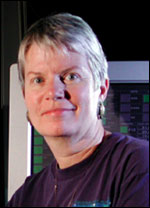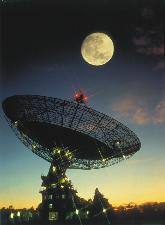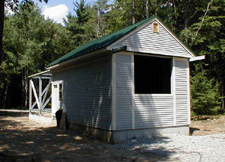SETI 的历史 - 13
<资料来源:The Planetary Society>
第13章:NASA 后的 SETI
The cancellation of NASA's SETI program in 1993 was a severe shock to the SETI community. For although HRMS was a very small project by NASA standards, it dwarfed all other SETI efforts combined. As long as NASA was a part of SETI, it was clearly the dominant player, and its demise left a void that was difficult to fill.
1993 年 NASA 的 SETI 项目被取消使 SETI 社区受到了严重的冲击。虽然 HRMS 对 NASA 来说只是个小项目,但它和其他 SETI 项目相比仍然是一个巨无霸,只要 NASA 还参与 SETI,它就是当之无愧的主导者,NASA 的退出留下了一个难以填补的真空。
NASA, nevertheless, was never the sole sponsor of SETI. In the shadow of HRMS grew a variety of private groups that devoted their resources to SETI, and sometimes joined forces with NASA. When HRMS was unexpectedly cancelled, these groups stepped forward to save what they could and preserve SETI research. Two of these private organizations stand out in particular for their leadership role in preserving SETI in difficult times: The SETI Institute, headquartered in Northern California's Silicon Valley, and The Planetary Society, based in Pasadena.
但 NASA 从来都不是 SETI 的唯一赞助者。在 HRMS 的阴影下,仍有一批致力于 SETI 事业的私人团体兴起,有时他们也与 NASA 进行合作。当 HRMS 被突然取消时,这些团体就站了出来并尽他们的可能将相关的设备等保存了起来,以使得 SETI 研究可以继续。其中两个团体因为在 SETI 最困难的时期充分发挥了他们的领导作用而脱颖而出:一个是 SETI 研究所,总部位于加州硅谷,另一个是行星协会,位于帕萨迪纳(Pasadena)。
The SETI Institute was founded in 1984 to sponsor and conduct research on SETI and life in the universe. The Institute included among its founders and sponsors SETI veterans such as Frank Drake of Project Ozma fame, and fellow "Dolphin" Bernard Oliver. But it also included a new generation of investigators such as Jill Tarter and Seth Shostak. Most of the Institute's earlier projects were funded by NASA, and it played a significant role in the targeted search program that was based at NASA Ames in nearby Moffett Field.
SETI 研究所成立于 1984 年,主要是赞助和管理 SETI 和宇宙生命相关事务。研究所的创建人和资助人主要包括一些 SETI 老兵,比如 Ozma 项目的 Frank Drake,比如“海豚社”成员,Bernard Oliver。但研究所也引入了新一代的研究人员,比如 Jill Tarter 和 Seth Shostak。研究所早期的项目大都是由 NASA 资助的,而且在由 NASA Ames 主持的位于 Moffett 场附近的特定目标搜索项目中扮演了重要的角色。
When HRMS was cancelled in 1993, the SETI Institute stepped in to save the targeted search, and became its main sponsor. It quickly acquired much of the NASA Ames' SETI equipment, and set about establishing its own privately funded project. In February 1995 it launched Project Phoenix, a highly advanced targeted search based on the defunct NASA program.
当 HRMS 在 1993 年被取消时,SETI 研究所随即进入以拯救特定目标搜索,并成为了它的主要赞助者。研究所很快就取得了 NASA Ames 的 SETI 相关设备,并开始准备发起它自己的私人资助项目。然后在 1995 年 2 月,Phoenix 项目启动,该项目基于 NASA 已废弃的项目,但在技术上更为先进。
For their search, Phoenix scientists compiled a list of 1000 stars that seemed the most likely to be homes of alien civilizations. They are mostly solar-type stars at a distance of no more than 200 light years from Earth and older than 3 billion years, as well as the very closest stars regardless of type. When stars are discovered to have planets, they are also added to the list. Each targeted star can be monitored for signals at any wavelength between 1000 and 3000 MHz. For comparison, the now popular SETI@home monitors a frequency band of only 2.5 megahertz, which is just over one-thousandth of Phoenix's capabilities. Phoenix computers then analyze this enormous bandwidth with razor-thin resolution, and can recognize a signal with a width of only 0.7 Hz. This is crucial for recognizing intelligent signals, because no known naturally occurring signal is less than 300 Hz wide.
Phoenix 项目的科学家们为他们的搜索项目筛选了 1000 个看起来像有地外文明的恒星并编制成列表。那些恒星大部分都类似于太阳并且和我们的距离不超过 200 光年而且“年纪”都大于 30 亿年,还有就是一些距离非常近的恒星,不管是什么类型。如果有新的恒星被发现也是有行星的,就也会加入到这个列表中。每个恒星都可以在从 1000MHz 到 3000MHz 的频率范围内进行监视。作为比较,现在流行的 SETI@home 项目只监视了 2.5MHz 的频率带宽,而这只比凤凰项目的千分之一略多。项目使用的计算机可以将这个巨大的带宽分成很细的切片灭进行分析,然后能够识别带宽仅 0.7Hz 的信号。这对于识别智能生命发出的信号非常关键,因为没有任何已知的自然信号的频宽小于 300Hz。
Project Phoenix is a mobile operation. Its advanced custom-made electronics hardware is packed into a truck trailer, which can pitch camp at any of the major radio observatories around the world. Its first stop was the 64 meter (210 foot) dish at the Parkes Observatory in Australia, and in September 1996 it moved to the National Radio Astronomy Observatory in Green Bank, West Virginia. There it shared time for a year and a half on the 43 meter (140 foot) dish, only a short distance from the 85 foot dish used by Frank Drake in the pioneering Project Ozma. Since 1998 Project Phoenix has been camped at Arecibo in Puerto Rico, where it makes use of the 305 meter (1000 foot) radio telescope, the largest in the world.
Phoenix 项目是一个可移动的计划。它那些高级定制电子设备可以打包放到卡车拖车里面,然后就可以安放到世界上任何大型射电观测站里面。它的第一站选在了澳大利亚 Parkes 观测站的 64 米(210 英尺)的碟状天线。然后在 1996 年它搬到了位于西弗吉尼亚 Green Bank 的国家射电天文观测站。在那儿它分享了一年半的观测时间,使用的是一个 43 米(140 英尺)的碟状天线,这个天线距离 Frank Drake 曾经在 Ozma 项目中使用的 85 英尺天线并不远。然后自从 1998 年开始,Phoenix 项目就扎根于波多黎各的阿雷西波,在那儿它可以使用 世界上最大 305 米口径(1000 英尺)射电望远镜。
As a targeted search, Phoenix can monitor particular stars with remarkable precision and breadth, unmatched by other searches. Working at "real time" with other observatories around the world, it can offer almost immediate verification of any signal it may detect. This is important both because it helps eliminate the possibility of Earthly interference, and because signals from deep space can disappear quickly due to interstellar scintillation. Its main limitation is that is has to share observing time with other radio-astronomy projects at the major radio observatories. At Arecibo, for example, it can only run 20 observing sessions of 12 hours each every six months, meaning that it is "on the air only a fraction of the time. Nevertheless, after almost seven years of operation, Project Phoenix is going strong, and gearing up for a receiver upgrade sometime in 2002.
为了目标搜索,Phoenix能用非凡的精度和带宽监视特别的恒星。这是和其他的搜索不能相比的。它和世界上其他天文台实时工作,它几乎能立刻确认任何可以检测到的信号。这是最重要的2项因为它能排除任何可能的干扰,因为从宇宙深处发射出来的信号会因为星际的碰撞而迅速消失。它最大的限制就是不得不在主要的天文台和其他射电天文项目共享观测时间。在 Arecibo,举个例子,我们仅仅每6个月举行一次12小时的观测。意思就是仅仅搜索一个片断!在2002年会启动一个升级的接收器。
Whereas the SETI Institute continued the HRMS targeted search, The Planetary Society took a different approach to SETI in the post-NASA years. Even before the cancellation of HRMS, The Planetary Society had shown a marked preference for "all sky surveys" in preference to targeted searches. This approach reflected the views of Bruce Murray, the future president of The Planetary Society, who consistently argued that we should not make any assumption about the nature of an alien civilization, and that we should therefore not limit our search to stars that appear hospitable to our human sensibilities. As director of the Jet Propulsion Laboratory from 1976 to 1982 Murray was largely responsible for establishing the "all sky survey" element of NASA's SETI project at JPL.
尽管SETI协会继续着HRMS的目标搜索,但是行星协会在SETI被NASA控制的时间里找到了一种不同的方法。甚至在HRMS取消之前,行星协会已经为目标搜索(项目)表现了一个显著的“全天观测”的优先选择。这个方法的自Bruce Murray,未来行星协会负责人的主意。他一直说服我们不应该对外星文明的种类作出任何怀疑。因此我们不应该限制表现我们敏感性和好客性的搜索。作为喷气推进实验室的负责人,Murray从1976年到1982不遗余力的为NASA的SETI项目作出主要贡献。
The Planetary Society, unlike the SETI Institute that concentrated its efforts on one highly sophisticated search, spread its resources among various groups trying out different techniques. Since the early 1980s the Society had been supporting several SETI ventures led by Paul Horowitz of Harvard University. In October of 1995, with Planetary Society funding, Horowitz launched Project BETA - an all-sky radio survey at the "water hole" frequency range. BETA, or the Billion-channel Extra-Terrestrial Assay, is based at the Harvard-Smithsonian Observatory in the town of Harvard, Massachusetts, where it makes use of the 26 meter (85 foot) radio telescope. BETA had completed several surveys of the skies visible from Harvard when the dish was damaged in a storm in March of 1999. With help from The Planetary Society, repairs are under way.
不像SETI协会一样在高度诡辩的搜索上集中它的努力,行星协会用它的资源在各式各样团体中找出不同的搜索方法。在20世纪80年代初,这个协会通过在哈佛大学的Paul Horowitz已经为几个SETI的冒险项目进行支持。1995年10月,靠着行星协会发行的债券,Horowitz启动了BETA计划——一个在边沿频率进行全天无线电监测。BETA,拥有10亿个包括额外区域的频道,基于在马萨诸塞州哈佛镇上的使用26米的射电望远镜的哈佛Smithsonian天文台。当1999年3月天线被风暴损坏时,BETA已经完成了几个可以通过哈佛的设备可以看见的天空观测项目。由于来自行星协会的帮助,修复工作正在进行。
Since 1996 The Planetary Society has also been supporting Project SERENDIP, a radio all-sky survey led by Dan Werthimer of U.C. Berkeley. Like Project Phoenix, the SERENDIP receiver is based at the Arecibo Observatory, but unlike Phoenix it doesn't need to wait for highly-prized observation time-slots. Instead, it is permanently perched above the Arecibo dish, scanning whichever part of the sky the dish happens to be pointed at and moving through the sky with the rotation of the Earth. While this approach would not work for a targeted search, it is well suited for an all-sky survey like SERENDIP.
从1996年开始行星协会也在支持一个由来自加利福尼亚大学伯克利分校(UC Berkeley)的Dan Werthimer的无线电全天观测叫做SERENDIP的计划。像Phoenix一样,SERENDIP接收器是基于Arecibo天文台的,但是不需要为高度宝贵的观测时间间隔而等待。它永久性的固定在Arecibo天线上的。它扫描天空的每一个部分。当这个方法不能为搜索目标而工作时,它(Phoniex?)就会像SERENDIP一样和全天观测工作很好的配合起来。
An offshoot of SERENDIP is the wildly successful SETI@home project - the distributed computing venture that sends radio data packets to millions of users around the world. These then use their own personal computers to analyze the data for an alien signal. When SETI@home founders were looking for a sponsor in 1998, The Planetary Society stepped in and provided the needed seed money. The Society has remained the main sponsor for the project ever since. SETI@home uses the data collected by the SERENDIP receiver, but focuses on a narrower bandwidth, centered on the 1420 KHz hydrogen line. With over three million personal computers at its disposal, SETI@home can analyze its data at a depth and detail impossible in more conventional approaches. Like SERENDIP the project is based at U.C. Berkeley and is led by project director David Anderson and chief scientist Dan Werthimer.
一个SERENDIP的分支是成功的SETI@HOME计划——通过向世界上数以百万计的用户发送无线电数据进行分布式的计算。他们使用他们自己的个人计算机进行搜索外星信号的分析工作。当1998年SETI@HOME的成立者在寻找赞助者时,行星协会开始成立十分需要的种子基金。从初期行星协会就保留主要的赞助人。SETI@HOME用SERENDIP的收集器,但是放在一个更小的频率范围之内,以1420KHZ的氢原子频率(the 1420 KHz hydrogen line)为中心。由于配置了超过300万台个人PC,SETI@home可以深层分析传统的方法不可能获得的细节。SERENDIP是基于伯克利并且由工程主管David Anderson和首席科学家Dan Werthimer。
The Planetary Society has also branched out beyond radio searches, sponsoring Optical SETI ventures that look for concentrated laser signals from the stars. In 1998 it began supporting two targeted searches, based in Harvard and U.C. Berkeley, which look for very short light bursts coming from candidate stars. Since the end of 2000 The Society has supplemented these projects by funding the construction of the largest dedicated Optical SETI observatory in the world, in Harvard, Massachusetts. When completed ometime in 2002, the observatory will be used for the first all-sky Optical SETI survey.
行星协会也在为另一个不同于无线电搜索的项目赞助,它是通过汇聚从恒星发出的激光进行观测的SETI项目。1998年它开始支持2个基于哈佛和UC伯克利的不同搜索活动。它们搜索从候选的恒星中发出的短光脉冲(short light bursts)。从2000年底开始,在世界上、在哈佛、马赛诸塞州,协会通过发行为SETI观测而献身的天文台的债券而为这2个项目提供支持。2002年完成后,这些天文台将用作第一个全天SETI光学观测站。
第12章:SETI 到华盛顿 ← | → 第14章:SETI 的今天



